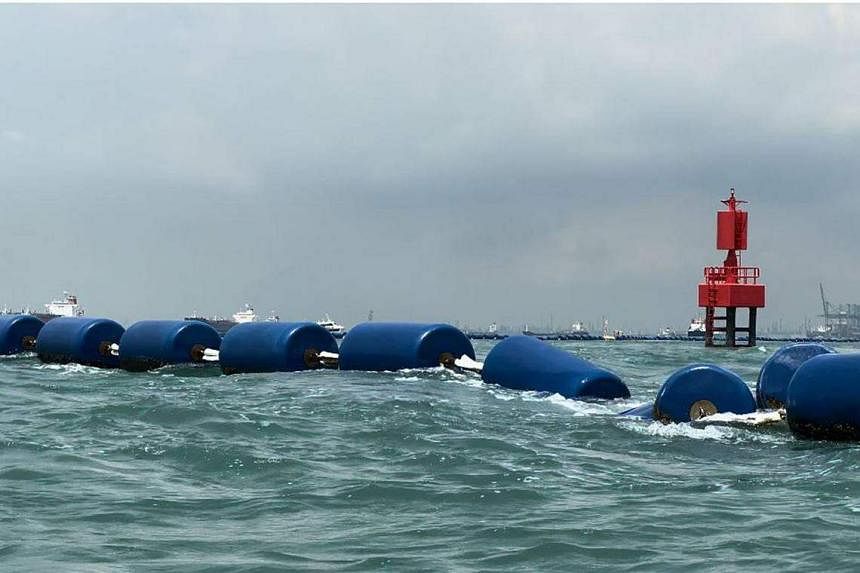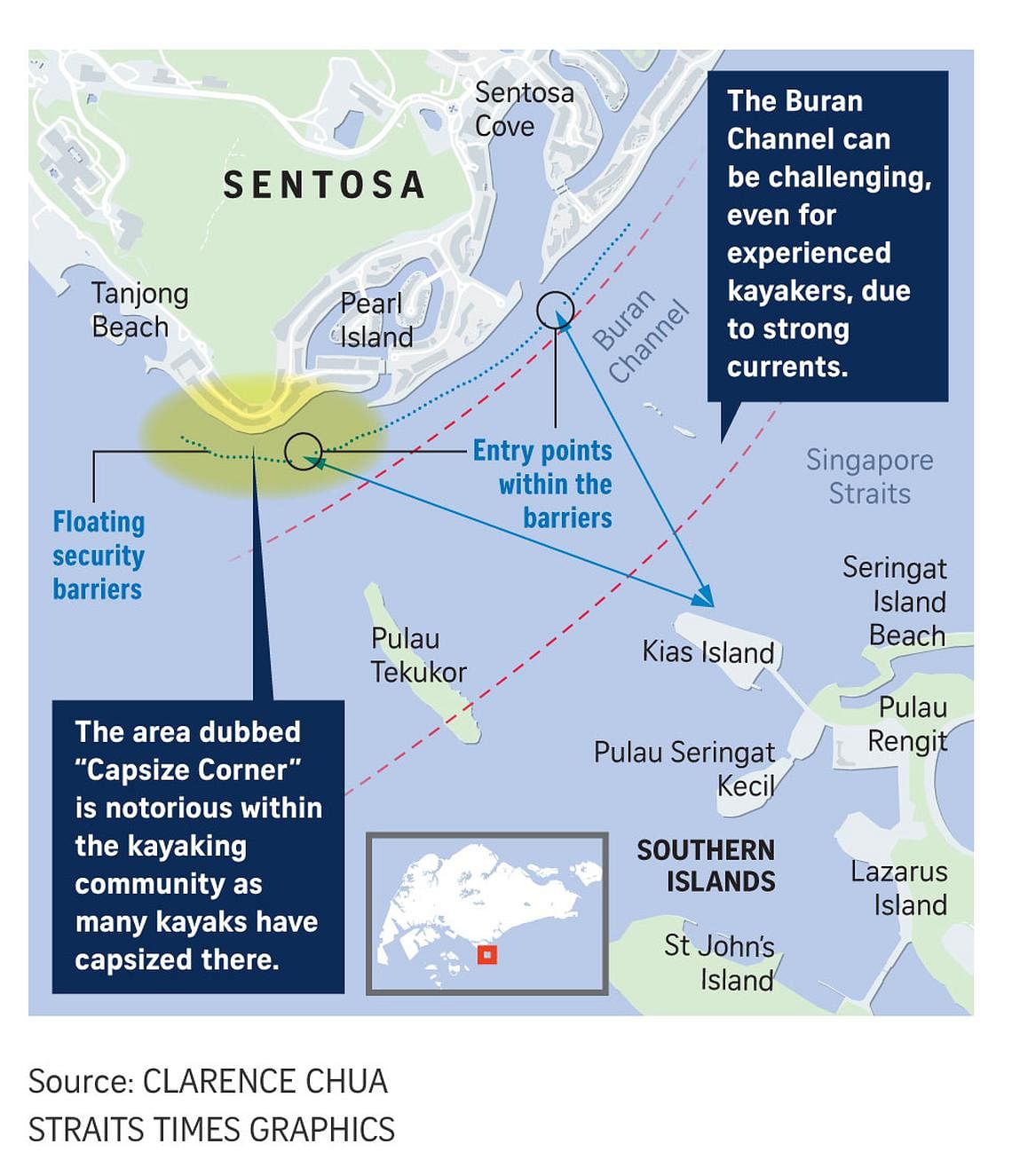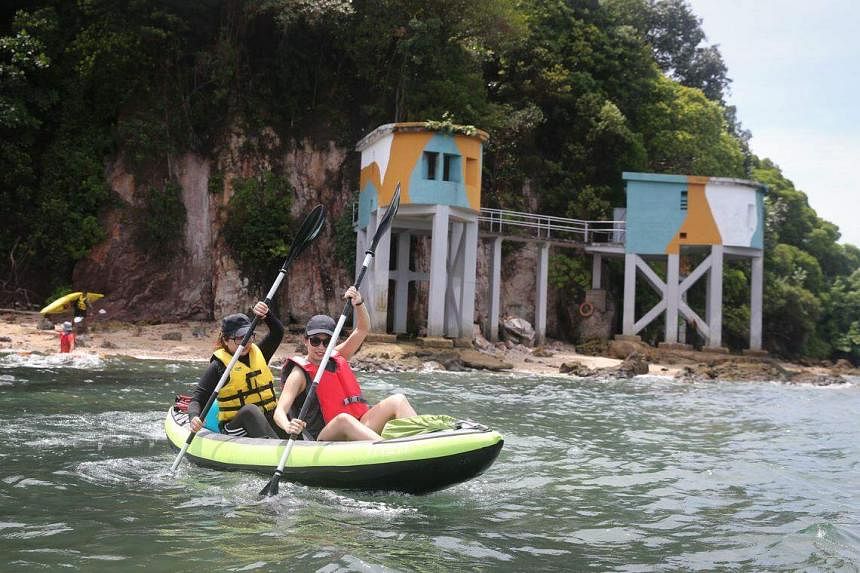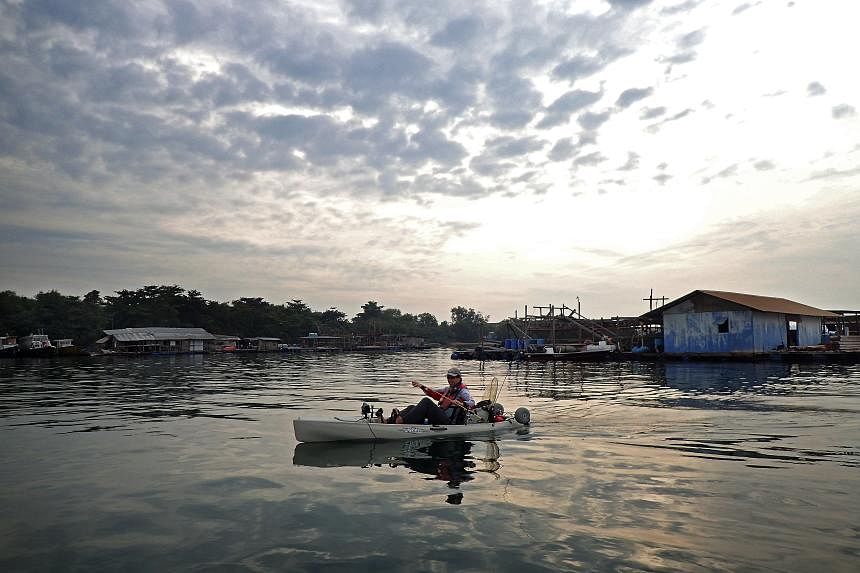SINGAPORE – Concerns about water safety have been raised after a 33-year-old kayaker died off the coast of Sentosa in October.
According to media reports, the woman’s kayak capsized near the floating security barriers between Sentosa and Tekukor, in a patch of sea known as the Buran Channel.
In 2021, The Straits Times reported that the kayaks of a group of six people also capsized in the same tricky spot before the paddlers were rescued by kayaking guides.
ST spoke to kayaking veterans and schools to find out what you need to do and look out for to paddle safely.
Q: What should you check for before heading out to kayak?
A: Before heading out to sea, it is essential to check the forecast for the conditions of tides, currents, wind and weather, said Singapore Paddle Club president Ng Daojia.
Such information can be found on the SG Marine Guide and National Environment Agency’s website.
“As conditions can change suddenly, always be ready to change your route, or forgo the activity altogether if conditions become unsafe,” said Mr Ng. “Identify stops along your route that will allow you to wait out squalls or lightning storms if this occurs while you are out on the water.”
Kayakers can also ensure they are always seen by wearing clothing that is highly visible, and by attaching a light to themselves or their kayak in low-light conditions, said Mr Ng.
He added that kayakers who are not experienced should stay within calmer waters near the shoreline, such as between Siloso Beach and Tanjong Beach in Sentosa.
Said Mr Ng: “Even if you are a proficient paddler, should you intend to paddle in any unfamiliar area, it is safer to be accompanied by someone with an in-depth understanding of the environment, navigation marks and obstacles there.”
Q: What kind of equipment should you take along or use when kayaking?
A: Some basic safety equipment that kayakers are encouraged to take along or use include a leg or waist leash with a quick release function, a personal flotation device (PFD) with a whistle, a phone with relevant emergency numbers on speed dial, a device or an app that provides real-time tracking of one’s location and an extra paddle, said Mr Ng.
In the event of a capsize, the leash helps to keep the kayaker attached to his kayak, and the quick release function helps the kayaker to get away from his craft if he wishes to.

Ninja Kayakers Foilers founder Clarence Chua said kayakers should ensure that their PFD is buckled at all times, even before going onto the water.
“A PFD can keep someone afloat and alive for hours, as long as he remains calm and keeps his head above water,” said Mr Chua.
“Life jackets or life vests are heavier but more buoyant, and can keep someone afloat for longer than a PFD that is lighter, which is what most kayakers use.”
Q: Are there areas that are known for strong currents?
A: Paddling through the Buran Channel can be difficult for kayakers of all experience levels, said Mr Chua, who added that he has had first-hand experience with “challenging to very scary levels” of currents there.
Just off the coast of Sentosa is an area dubbed the “Capsize Corner”, which is near the Buran Channel and where the floating security barriers are lined. The spot is notorious within the kayaking community for the number of capsizes that have taken place there, said Mr Chua.
“It can get very scary with big and fast waves, especially for beginners,” he said.
“I myself hung on to the blue barriers there once and was lucky the (currents) did not pull me under, but there have been many incidents there now. The barriers at other locations such as the north of Singapore are less notorious.”

When the currents are pushing kayakers against where they want to head to, usually north-west from the Southern Islands back to Tanjong Beach or One Degree 15 Marina, kayakers will panic and grab on to the blue barriers so that they would not get swept farther away, as there are only two points of entry they can go through, he said.
Feeling like they are being pushed away from the entry point, kayakers will then try to hang on to the security barriers, which causes strong currents to push them against and under the barriers, leading to a capsize, said Mr Chua.
“In such a situation, it would be safer to not fight the current and instead drift with it. It may seem scary when you are pushed away from your destination towards the open sea, but boats may still rescue you,” he added.
“This is better than fighting the current and tiring out, or worse, getting pulled under the barriers and capsizing.”
Q: What should I do if my kayak or a companion’s kayak has capsized?
A: If a companion’s kayak has capsized, try to ascertain if the situation is safe before trying to help, said Mr Chua, who added that both paddlers can end up drowning if the situation is unsafe, such as if they are near a big ship, or if there are strong currents.
“If you can approach the capsized kayaker safely, get him to hang on to your kayak first, and not climb on board as this can topple the kayak,” he said.
“You can then tow him and navigate to more shallow waters, where both parties can be safe. Avoid going near the floating barriers, which are a proven source of danger.”
Q: What kind of safety precautions are in place if I want to learn how to kayak at a school?
A: Members of the public who are interested in picking up kayaking can sign up for classes such as those offered by ActiveSG, which is under Sport Singapore, and the Singapore Canoe Federation (SCF).
ActiveSG Canoe Academy lead Cheryl Tay said all coaches in the academy are experienced paddlers, trained and certified in line with the International Canoe Federation’s syllabus to ensure the safety of all participants.

“Safety briefings are carried out with both new and returning participants, which include guidance on actions to take in the event of inclement weather, or if they feel unwell on water,” said Dr Tay, who added that coaches take a “firm stance” against any behaviour by participants that may put themselves or others in danger.
She said the academy operates in reservoirs such as MacRitchie and Marina and Jurong Lake Gardens, which have “significantly lower” risk factors than open waters that are subject to more unpredictable environmental conditions, such as changes in wind and current conditions.
An SCF spokesman said the organisation adheres to a strict ratio of one coach to 10 students, and follows safety guidelines when conducting courses such as the kayak orientation programme.
He added: “We also perform risk analysis, and visual checks on the ground including checking the physical well-being of participants, before commencing any programme.”
Q: Do I need to be certified to go kayaking?
A: According to safety guidelines found on the Maritime and Port Authority of Singapore’s website, it is recommended for people who canoe or kayak in Singapore waters to obtain the One Star Certification from the SCF before paddling out on their own.
The SCF rents out kayaks from the Paddle Lodge at MacRitchie Reservoir, but kayakers without certification are permitted to rent only sit-on-top kayaks and to paddle within a specified area, said the spokesman. Certification is required for all other types of kayaks, such as the closed-deck and canoe sprint kayak.
Sit-on-top kayaks are more stable and hence more suitable for beginners than closed-deck kayaks, said the SCF spokesman.
They also feature an open cockpit, which allows kayakers to enter and exit with convenience.



